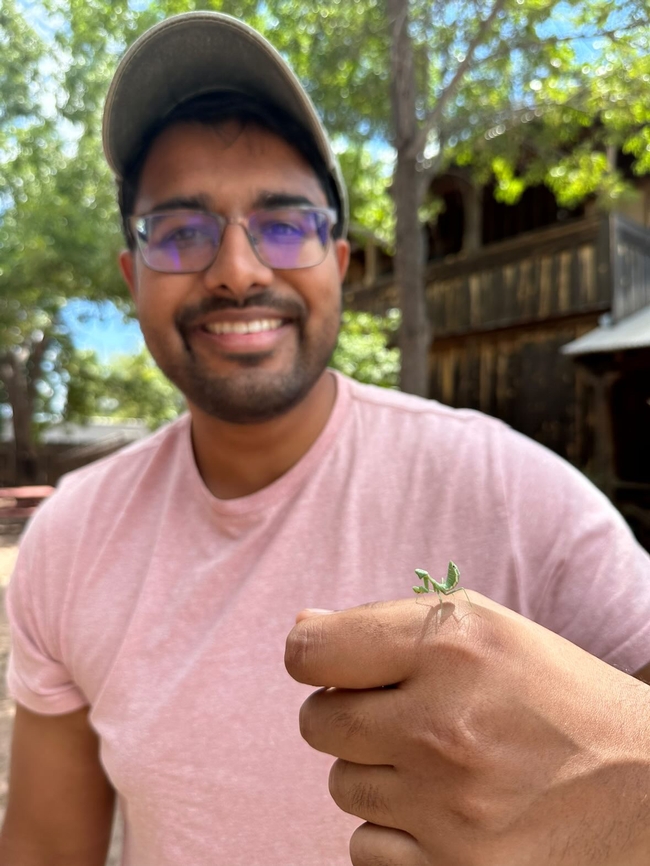
An enthusiastic crowd is expected at the Bohart Museum of Entomology open house from 1 to 4 p.m., Sunday, Aug. 27 in Room 1124 of Academic Surge Building, 455 Crocker Lane, University of California, Davis. It's free and family friendly. Parking is also free.
We asked praying mantis expert and entomologist Lohitashwa "Lohit" Garikipati what fascinates him about mantises. He's a UC Davis alumnus (bachelor of science degree in entomology, 2019) who's wrapping up requirements for his master's degree at Towson University, Towson, MD. Next career goal: obtain his doctorate.
During his undergraduate years at UC Davis, Garikipati displayed many of his mantises at the Bohart open houses, and answered scores of questions. He won't be attending the open house Sunday, but he'll be there in spirit!
"What's fascinating about them... hard to pick just one thing!" Garikipati wrote in an email. "If I had to choose it would be their general awareness about the environment they are in. They are always watching, always waiting, and adjust their posture, behavior, and movement based on various environmental stimuli. They engage in some of the most interesting predatory behaviors; pouncing, lunging, spearing (yes, spearing!) and sometimes throwing themselves off of perches to secure potential prey. Few flightless predators can catch prey out of the air on the wing but many specialized species are more than capable of doing so. They are the insect equivalent of cats in many ways, but with some weird adaptations!"
His studies are going well. He's describing a new species from the southwestern United States--"that paper should be out by the end of the year. hopefully!"
A native of Pleasanton, Calif., Garikipati says he's been interested in praying mantises since elementary school. “I started rearing native species in the 5th grade,” he recalled. (Read about his trip to Belize)
Mantises Related to Cockroaches. Scientists tell us that the closest relatives of mantises are cockroaches and termites, and that the mantises probably evolved from cockroach-like ancestors.
Gardeners know them as ambush predators with triangular heads, bulging eyes, and spiked forelegs.
Their diet? Basically any arthropod they can catch. We've seen them devouring monarchs, Western tiger swalowtails, skippers, honey bees, longhorned beee, syrphid flies, green bottle flies, and even a lady beetle (aka ladybug).
Late this afternoon we spotted a Stagmomantis limbata perched on a yellow zinnia in our Vacaville garden. Nearby were two crab spiders feeding on bees, one a honey bee and the other a longhorned bee.
Just you wait, the mantis seemed to say. It's just a matter of time.
Open House. "Bring a live praying mantis to show and share (and to bring back home) and have your name entered into a raffle for a Bohart t-shirt of your choice! The mantis can be a purchased pet or one you found outside," says Tabatha Yang, Bohart Museum's education and outreach coordinator.
The Bohart Museum of Entomology, founded in 1946 and directed by UC Davis distinguished professor Lynn Kimsey, houses a global collection of eight million insect specimens; a live petting zoo, including Madagascar hissing cockroaches, stick insects and tarantulas; and an insect-themed gift shop, stocked with books, posters, collecting equipment, t-shirts, hoodies, jewelry and more. More information is available on the website or emailing bmuseum@ucdavis.edu).
Attached Images:
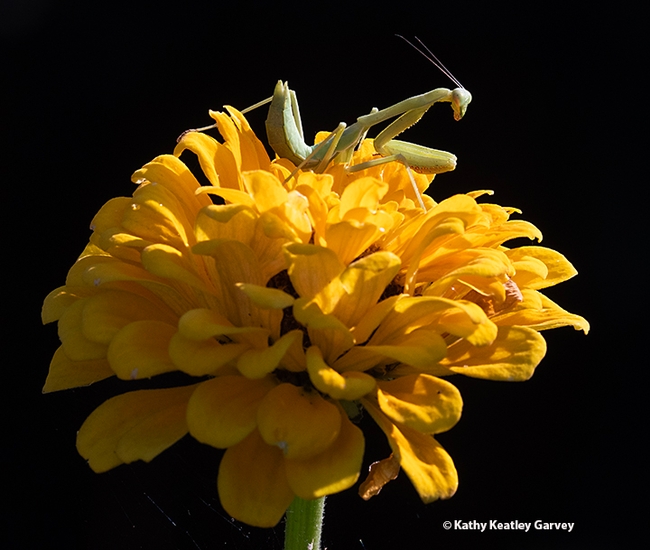
A backlit praying mantis, Stagmomantis limbata, reigns supreme on a yellow zinnia in a Vacaville pollinator garden. (Photo by Kathy Keatley Garvey)
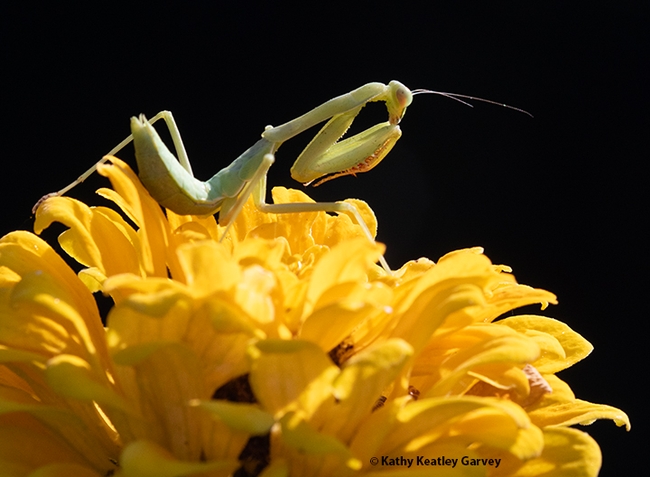
The praying mantis strikes a familiar pose. (Photo by Kathy Keatley Garvey)
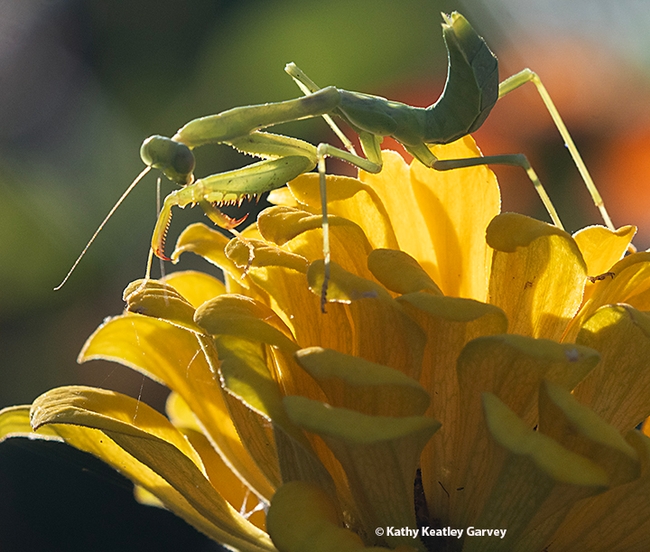
No more pictures! The Stagmomantis limbata crawls down the zinnia. (Photo by Kathy Keatley Garvey)
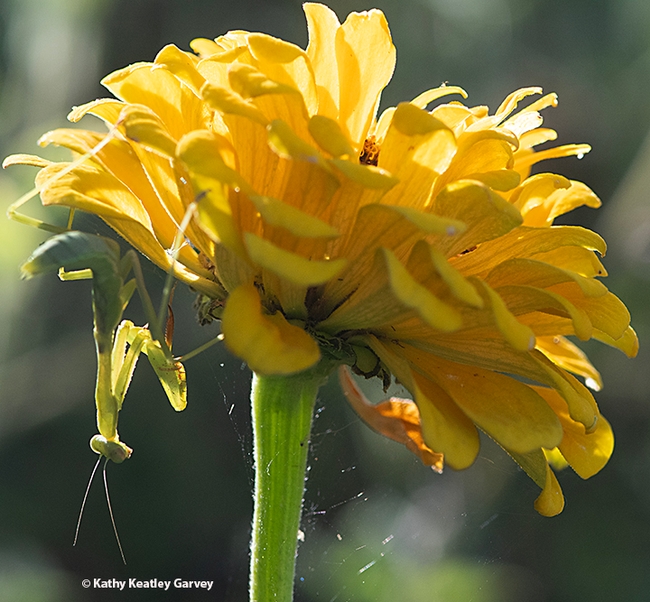
The praying mantis, Stagmomantis limbata, claims a different view of the world. (Photo by Kathy Keatley Garvey)